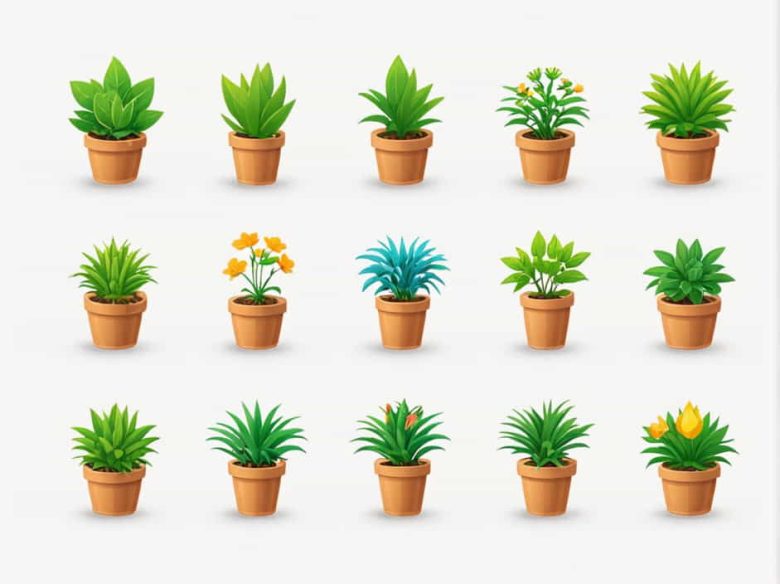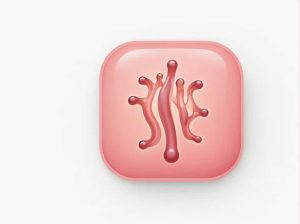Plants are classified into different groups based on their characteristics. One of the most important classifications is based on the number of cotyledons (seed leaves) present in their seeds. This results in two major categories: monocotyledonous (monocots) and dicotyledonous (dicots) plants.
Understanding the differences between monocots and dicots is essential for botanists farmers and gardeners. This topic explores their characteristics structures and examples along with descriptions of their leaves stems roots flowers and seeds.
What Are Monocotyledonous and Dicotyledonous Plants?
Monocots and dicots belong to the angiosperms which are flowering plants that produce seeds enclosed in fruits.
- Monocotyledonous plants (monocots) have one cotyledon (seed leaf).
- Dicotyledonous plants (dicots) have two cotyledons in their seeds.
These differences affect various aspects of their growth structure and reproduction.
Key Differences Between Monocots and Dicots
To better understand the distinctions let’s compare their main features:
| Feature | Monocots | Dicots |
|---|---|---|
| Seed Structure | One cotyledon | Two cotyledons |
| Leaf Venation | Parallel veins | Net-like veins |
| Root System | Fibrous roots | Taproot system |
| Stem Vascular Bundles | Scattered | Arranged in a ring |
| Flower Parts | Multiples of 3 | Multiples of 4 or 5 |
| Secondary Growth | Absent | Present in woody dicots |
Monocotyledonous Plants
Monocots are characterized by simple leaf structures parallel venation and a fibrous root system. They are commonly found among grasses lilies and palm trees.
Characteristics of Monocots
- Single cotyledon in the seed.
- Parallel leaf veins without branching.
- Fibrous root system which spreads widely.
- Vascular bundles scattered in the stem.
- Flowers with parts in multiples of three (e.g. 3 petals 6 stamens).
Examples of Monocot Plants
- Rice (Oryza sativa) – An essential cereal crop.
- Wheat (Triticum aestivum) – Used for making flour.
- Banana (Musa spp.) – A widely consumed fruit.
- Coconut (Cocos nucifera) – A tropical palm tree.
- Tulip (Tulipa spp.) – A famous ornamental flower.
Dicotyledonous Plants
Dicots have two cotyledons a net-like leaf vein structure and a taproot system. They include many trees shrubs and flowers.
Characteristics of Dicots
- Two cotyledons in the seed.
- Reticulate (net-like) venation in leaves.
- Taproot system with a main root growing downward.
- Vascular bundles arranged in a ring in the stem.
- Flowers with parts in multiples of four or five.
Examples of Dicot Plants
- Mango (Mangifera indica) – A tropical fruit tree.
- Rose (Rosa spp.) – A popular flowering plant.
- Sunflower (Helianthus annuus) – Grown for seeds and oil.
- Tomato (Solanum lycopersicum) – A widely cultivated vegetable.
- Oak Tree (Quercus spp.) – A hardwood tree species.
Comparison of Leaves in Monocots and Dicots
One of the easiest ways to differentiate between monocots and dicots is by examining their leaves.
- Monocot leaves: Long and narrow with parallel veins. Example: corn bamboo.
- Dicot leaves: Broad with branching veins forming a net-like pattern. Example: maple guava.
Comparison of Stems in Monocots and Dicots
The vascular tissue arrangement in stems differs between monocots and dicots.
- Monocots: Vascular bundles are scattered throughout the stem.
- Dicots: Vascular bundles are arranged in a circular pattern.
This difference affects growth and structure with dicots having stronger woody stems compared to monocots.
Comparison of Roots in Monocots and Dicots
Roots play a crucial role in absorbing water and nutrients.
- Monocots: Have a fibrous root system with many thin roots spreading outward. Example: grass wheat.
- Dicots: Have a taproot system with a single main root growing deep into the soil. Example: carrot mango tree.
Comparison of Flowers in Monocots and Dicots
Flower structure also helps in identifying monocots and dicots.
- Monocot flowers: Have petals in multiples of three (e.g. lilies orchids).
- Dicot flowers: Have petals in multiples of four or five (e.g. roses sunflowers).
Importance of Monocots and Dicots
Both monocots and dicots play vital roles in ecosystems and human life.
Economic Importance
- Monocots provide major crops like rice corn wheat and sugarcane.
- Dicots contribute to fruits vegetables medicinal plants and timber.
Ecological Importance
- Monocots help in soil stabilization (e.g. grasses prevent erosion).
- Dicots contribute to oxygen production and biodiversity.
Monocotyledonous and dicotyledonous plants differ in seed structure leaves roots stems and flowers. Recognizing these differences helps in agriculture botany and gardening. Both plant types are essential for human food medicine and ecosystems.



